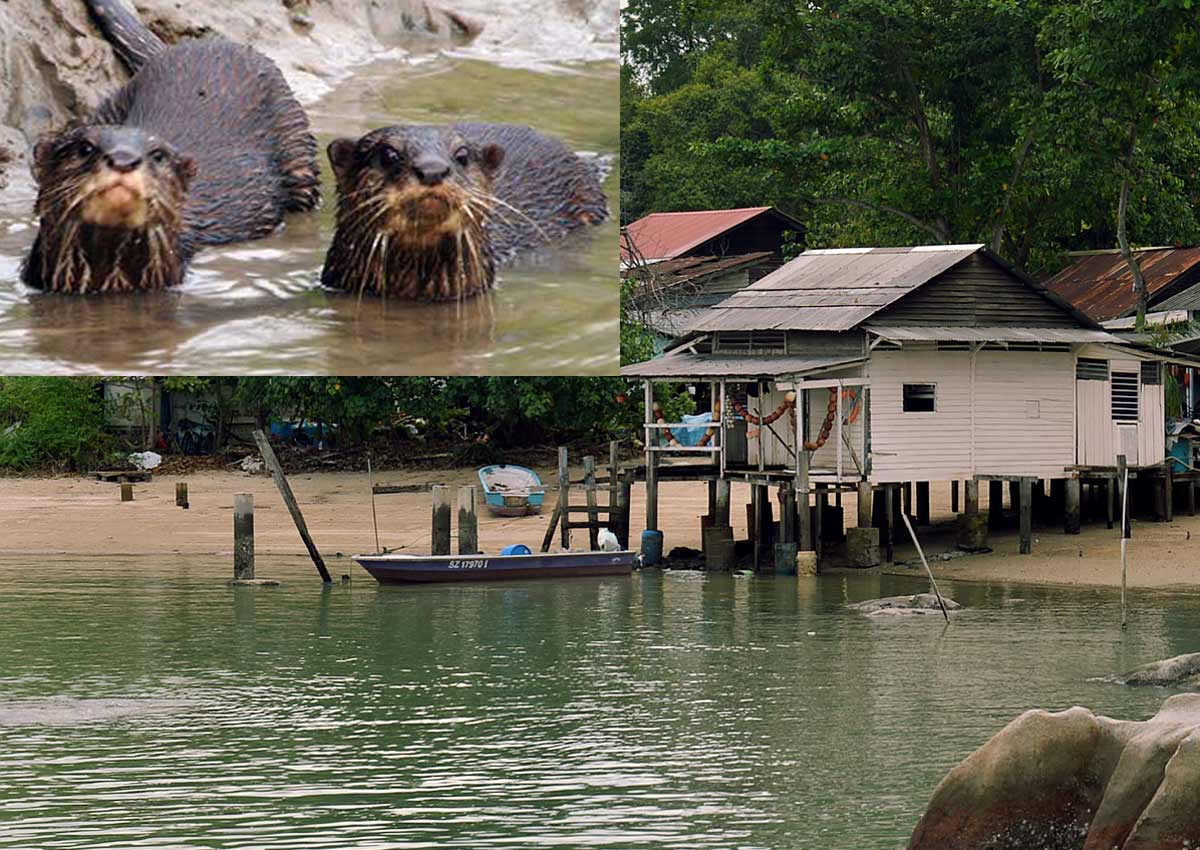The next time you visit Pulau Ubin, take a closer peek at your surroundings, as it might reveal treasures of nature that are more unique and interesting than a cursory glance of the coastal and old kampong charms of the island.
You might have spotted wild boars foraging for food near bicycles parked by visitors, aquatic flowers blooming in ponds and big spiders trapping their victims in gossamer webs.
But do you know that the island off the Changi coast is is home to more than 720 native plant species and over 300 species of animals? What makes Pulau Ubin more special is that some of these species are found only on the island and not on mainland Singapore.
If you’re thinking of taking a boat trip to the island again, do look out for these fascinating animals, insects and plants that have been clinging on for survival on the most endangered list. Bring along a pair of binoculars and marvel at close range.
Ashy Roundleaf Bat (Hipposideros cineraceus)
Two colonies of this critically endangered bats have been made abandoned buildings in Pulau Ubin their homes. Although found in South Asia and Southeast Asia, it has never been spotted on the mainland.
Lesser False Vampire (Megaderma spasma)
In Singapore, this bat is found only on Pulau Ubin and Pulau Tekong. Recently, Ubin has become popular with this species as several colonies have been found occupying disused structures. It feeds primarily on insects. No, it does not go after your blood.
Oriental Small-clawed Otter (Aonyx cinerea)
Nine sightings of this otter on Pulau Ubin have been recorded over the past 16 years. No recent sightings on the mainland.
Dwarf Crow (Euploea tulliolus ledereri)
Believed to be extinct in Singapore but rediscovered on Pulau Ubin in 2002, this butterfly flutters quite lazily, usually drawn to the hairy Indian Heliotrope plant (Heliotropium indicum).
Common Jay (Graphium doson evemonides)
Last spotted on the mainland in 2006, it was found again on Pulau Ubin in 2005. It is constantly on the move, flitting from one flower to another to feed on nectar.
Greater mouse-deer (Tragulus napu)
Thought to be extinct on the mainland, there is a sizable population on Ubin. It inhabits forested areas, and emerges at night to forage for fallen fruits, leaves, grasses and aquatic plants.
Rare trees and orchids
Collared fig (Ficus crassiramea)
This critically endangered tree can be found in Pulau Tekong and Pulau Ubin only. There are a few specimens of this ‘killer’ tree on Ubin, including one acknowledged officially as a Heritage Tree near Ketam Mountain Bike Park. The ‘strangling fig’ grows from a seed left by animals like birds at the top of a tree. From here, it fans out its roots downwards till it encircles the host tree’s trunk. In many cases, the host tree is finally “strangled” to death after many years.
Eye of the Crocodile (Bruguiera hainesii)
Critically endangered, it is one of the rarest mangrove species in the world with only about 200 mature trees left. Eleven including two on Ubin are found in Singapore. One tree was found in the southern coast of Ubin, while another was discovered on Noordin Beach in 2005. National Parks (NParks) has started a programme to collect and plant young seedlings to increase the population.
Ficus stricta
Another rare species of the strangling fig, it was listed as native to Singapore only in 2012, after the first specimen was discovered in Changi. It is only known to thrive in Changi and Pulau Ubin. In the 19th century, British engineer and artist John Turnbull Thomson produced a drawing of a tree in 1850, which is thought to be the same one found near the mouth of Sungei Pulau Ubin, in 2002. Listed as a Heritage Tree, it is believed to be more than 160 years old. It bears fruit only after intervals of more than six years. Oriental Pied Hornbills and Green Imperial Pigeons have been spotted feeding on the figs.
Hybrid stilt mangrove-happy face (Rhizophora X lamarckii)
In 2011, an NParks staff chanced upon this naturally-occurring mangrove hybrid of of the Rhizophora apiculata and Rhizophora stylosa, creating a new record here. So far, five trees have been found at the Sungei Jelutong and Jalan Noordin mangrove.
Marsh Pulai (Alstonia pnuematophora)
It stands out from other Pulai trees because of its ‘breathing’ roots. Found mainly in the central forests on the mainland, a few trees flourish on Pulau Ubin.
Jamba (Neuwiedia veratrifolia)
Found in lowland forests, this critically endangered orchid produces long clusters of yellow flowers. Grown on soil, the Jamba will see its population multiply as plantlets at one site have been transplanted to two other areas on Ubin.
Pterospermum diversifolium
This tree species was first collected by Henry Ridley, former director of the Singapore Botanic Gardens. It was thought to be extinct, but was found in Pulau Ubin in 2013. Currently, fewer than 50 mature trees are seen in Singapore.
Sheath-covered Spathe Robiquetia (Robiquetia spathulata)
This critically endangered orchid was recorded only once in Singapore by Henry Ridley, who collected it near the Botanic Gardens. It was only in 2006 that a single plant was rediscovered in Pulau Ubin. Through tissue culture, the species has been successfully propagated and reintroduced to other parts of Pulau Ubin, as well as mainland Singapore.
Thrixspermum amplexicaule
You would be lucky to catch a glimpse of this rare pale lilac orchid as its blooms last for only a day. The semi-aquatic orchid was found at one site on Ubin, but it has been successfully propagated and reintroduced to other sites on the island since 2010. Still regarded as critically endangered.
Utania nervosa
Discovered at Ubin’s Chek Jawa in 1997, this small tree was named as a new species called Utania racemosa in 2014. A common tree on Pulau Ubin and Pulau Tekong, it is also found in south-east Johor.
It has large, leathery leaves shading clusters of white flowers with very short stalks.
chenj@sph.com.sg























































